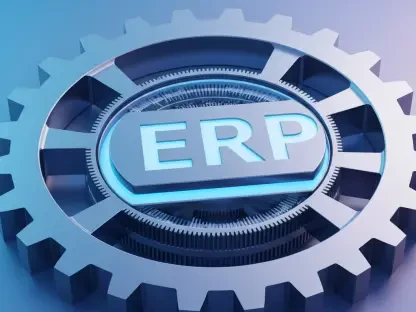The evolution of healthcare technology has ushered in an era where data is generated, stored, and utilized at unprecedented rates, demanding efficient data ingestion processes that match the growth pace. As healthcare tech companies expand, they face the need to process increasing volumes of complex data from multiple sources such as electronic health records, connected medical devices, and patient management systems. This shift necessitates scalable solutions to ensure seamless data flow and processing without bottlenecks that could hinder operational efficiency and service delivery.
Data ingestion forms the bedrock upon which other data-driven processes are built, influencing how insights are generated and decisions are made. For healthcare tech companies, a robust data ingestion system isn’t just a technical requirement; it’s a strategic enabler that supports patient care, regulatory compliance, and innovation. As data sources and types proliferate, managing them effectively while ensuring data quality and security becomes a central challenge. The surge in data, when managed well, brings opportunities to enhance patient outcomes, streamline operations, and foster research and development.
Challenges in Scaling Data Ingestion
Healthcare tech companies venturing into scaling data ingestion must first comprehend the inherent challenges associated with such an endeavor. One of the most pressing complications involves integrating data from disparate sources, each with unique formats and protocols, into a unified system. This fragmentation can lead to inefficiencies in data processing and limit the ability to leverage data effectively for analytics and decision-making purposes. With each additional data source, the complexity of maintaining consistency and accuracy multiplies, posing significant hurdles for healthcare tech entities looking to expand their operations.
Moreover, ensuring data quality and integrity throughout the ingestion process is vital yet immensely taxing. As data traverses from entry to processing, inconsistencies can emerge, primarily when diverse systems are involved. In healthcare, the stakes are particularly high, as inaccuracies can adversely impact clinical decisions and patient outcomes. Challenges arise not only from the technical need to process vast data quantities but also from stringent regulatory requirements that dictate how this data must be handled. Organizations must balance their scaling ambitions with compliance with healthcare regulations, such as HIPAA, which mandate data protection and confidentiality.
Scalability also requires addressing evolving demands for speed in data processing. Real-time data analytics is becoming the norm, necessitating systems that can ingest data quickly and efficiently to provide timely insights. This demand places additional pressure on existing infrastructures, which may struggle to meet the expectations for high-speed data processing without significant architectural overhauls. Companies must assess their current capabilities, pinpoint potential bottlenecks, and strategize enhancements that facilitate both immediate improvements and long-term scalability.
Strategic Considerations for ETL Platforms
Choosing the right ETL platform is pivotal for healthcare technology companies aiming to upscale their data ingestion capabilities. One strategic consideration includes evaluating the platform’s ability to support modular and reusable transformations. Modularity enables businesses to apply the same data transformations across different datasets, facilitating efficiency and reducing redundancy. This feature is crucial for handling repetitive data processing tasks and ensures that business logic can be consistently applied across various data sources, streamlining the integration process.
Another critical factor is the ease of use and the developer experience provided by the ETL tool. A platform with a user-friendly interface and accessible development environment can significantly enhance productivity. It caters to a diverse team of data engineers by simplifying debugging processes and development workflows, which is especially important given the complexity of healthcare data systems. Such platforms lower the entry barrier for teams and empower them to engage in more complex data manipulation and analysis tasks, providing a catalyst for innovation and operational efficiency.
Further, an ETL platform should offer robust observability features to furnish real-time insights into data pipeline health and performance. Built-in monitoring tools that track data flow and identify issues or inefficiencies can prevent potential disruptions and optimize data processing. This capability allows organizations to maintain an ongoing awareness of their data systems, ensuring that issues are promptly addressed and processes remain efficient as data volumes grow. Observability is not just an operational advantage but a strategic asset that supports proactive maintenance and enhances system reliability.
Balancing Cost and Scalability
In the pursuit of scaling data ingestion processes, healthcare technology companies must strategically balance cost-efficiency with scalability needs. A scalable solution should not only accommodate current data volumes but also provide a clear path for future growth without proportionally escalating costs. Organizations need to address factors such as licensing, infrastructure, and operational expenses while weighing them against the system’s capacity to adapt to increased demand and complexity. Selecting platforms that offer flexible pricing models based on data usage can help manage costs effectively as business scales.
Evaluating and selecting a scalable ETL platform involves a prudent analysis of total cost of ownership, encompassing both direct and indirect expenditures. Beyond initial investment, operational costs, maintenance requirements, and potential downtime implications must be considered. An ideal platform minimizes hidden costs and offers transparent pricing structures that align with organizational budgeting constraints. The platform’s reliability and support services are vital in minimizing risk and ensuring that unscheduled disruptions do not inflate costs.
Moreover, the chosen solution should support efficient resource allocation, allowing the organization to focus on core competencies without the distraction of managing complex data systems. Automating redundant tasks and reducing manual dependencies can liberate valuable human resources, directing them towards strategic initiatives that drive business growth. By investing in scalable, cost-efficient ETL solutions, healthcare tech companies can ensure that financial resources are wisely utilized, maximizing returns on investment and facilitating sustainable growth in the ever-evolving data landscape.
Future Directions and Considerations
As healthcare technology companies continue to expand and adapt to burgeoning data demands, thoughtful planning and strategic foresight are imperative. It’s essential to recognize that scalability is not a one-time solution but an ongoing process that requires continuous improvement and innovation. The landscape of healthcare data is rapidly evolving, necessitating platforms that can quickly adapt to emerging technologies and integrate novel data types. Companies should be prepared to reassess and update their ETL strategies to incorporate advancements in data processing and analytics tools.
Future-proofing data ingestion processes also involves leveraging cloud computing and distributed systems, which offer unparalleled scalability and flexibility. Cloud-based solutions enable organizations to scale their computing resources dynamically, addressing fluctuations in data volumes and demand. This adaptability is crucial for healthcare tech companies experiencing rapid growth or seasonal peaks in data traffic. By capitalizing on the distributed architecture, organizations can enhance processing speed, resilience, and fault tolerance, setting the stage for continued innovation and competitive advantage.
Equally important is the focus on cultivating a skilled workforce equipped to harness these advanced tools and technologies effectively. Investing in training and talent development ensures that teams remain adept at navigating complex systems and can drive innovation from within. By fostering a culture of continuous learning and adaptability, healthcare tech organizations can empower their teams to embrace new challenges and seize opportunities that arise within the ever-changing data landscape. These forward-thinking strategies not only facilitate scalability but also position companies for success in the future.
Innovations in Data Management
Healthcare technology is on the cusp of transformative changes driven by innovations in data management that promise to revolutionize the way data is ingested and utilized. Advancements such as machine learning algorithms integrated into ETL processes are redefining how data cleansing and transformation are performed, ensuring higher accuracy and efficiency. These algorithms can automatically detect anomalies and patterns, optimizing data quality and streamlining the preparation of datasets for analytics. The integration of artificial intelligence into data management processes holds promise for transforming complex data into meaningful insights with minimal human intervention.
Moreover, the rise of edge computing is facilitating real-time data processing closer to the data source, reducing latency and bandwidth demands on central systems. By processing data at the point of collection, healthcare tech companies can enhance the speed and responsiveness of their data applications, enabling prompt decision-making and action. This shift toward decentralized processing is particularly valuable in handling the vast and varied data generated by connected medical devices, remote monitoring systems, and telehealth platforms, further enhancing patient care and operational efficacy.
Blockchain technology is also emerging as a robust solution for ensuring data integrity and security, offering transparent and tamper-proof data transactions. As data privacy and security remain paramount in healthcare, blockchain’s potential to reinforce trust and compliance is gaining traction. Its application extends to streamlining operations through smart contracts and securing sensitive health information across interoperable systems. These pioneering approaches emphasize innovation’s role in overcoming existing challenges, paving the way for more integrated, efficient, and secure data management frameworks.
Key Takeaways and Strategic Insights
The rapid advancement in healthcare technology has dramatically increased the generation, storage, and use of data, necessitating effective data ingestion processes to keep pace. As healthcare technology firms grow, they’re challenged to handle rising volumes of complex data from sources like electronic health records, medical devices, and patient management systems. This evolution calls for scalable solutions to facilitate smooth data flow and processing, avoiding bottlenecks that could disrupt efficiency and service delivery.
Data ingestion is the foundation for all data-driven processes, shaping how insights are formed and decisions made. For healthcare tech companies, a strong data ingestion system is more than a technical necessity; it’s a strategic asset enhancing patient care, regulatory compliance, and innovation. As data sources multiply, effectively managing them while ensuring quality and security poses a core challenge. When managed well, this data surge can improve patient outcomes, refine operations, and drive research development.









